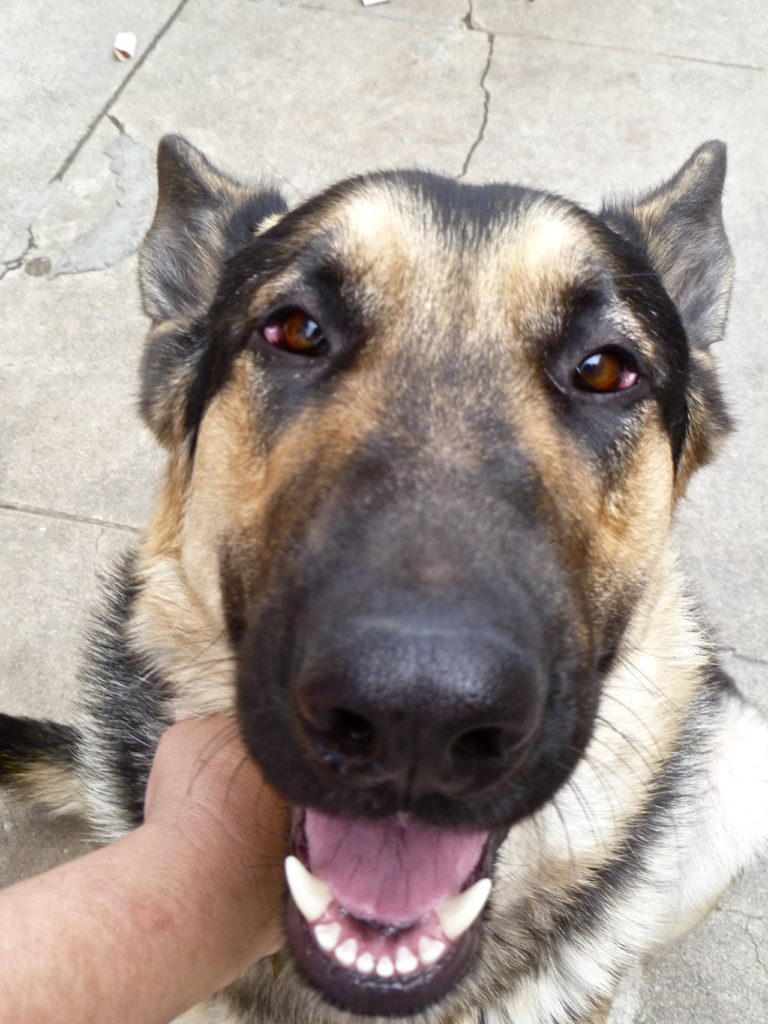When you are trying to figure out whether your dog is happy and healthy, one of the top things you are going to pay attention to is behavior. Oftentimes, it is easier to get clues about a pet’s state this way than it is to look for bodily signs or symptoms.
So if you are thinking about giving your dog CBD oil to treat a physical or psychological condition, you might be wondering how that supplement might impact the way that your dog behaves.
As of this point in time, research into how CBD affects dogs is still in the initial stages.
So there is not a lot of scientific research which we can reference. But we can talk about some of the conditions which you might treat in your pet using CBD oil, and consider how improvements might manifest through your dog’s behavior.
What Conditions Can You Treat in Dogs Using CBD Oil?
Following is a list of common ailments which CBD might be useful for treating in dogs:
- Inflammation
- Acute injuries
- Arthritis pain and stiffness
- Epilepsy
- Nausea
- Hip dysplasia symptoms
- Immune problems
- Anxiety and depression
- Problems involving appetite
- Stress
- Symptoms of cancer
There are studies to support some of these uses in animals. For example:
- In this research study, it was discovered that dogs given 2 mg/kg of CBD twice daily had improvements in osteoarthritis, both in terms of comfort and activity.
- Another paper points toward powerful pain relieving effects of CBD when used in animals. The researchers explained, “… cannabinoid induced antinociception is more effective in alleviating pain than opioid drugs by suppressing wind up and noxious stimulus induced central sensitization.”
- Researchers have also discovered that CBD appears to help reduce epileptic seizures in animals.
- This study found that, “enhancing cannabinoid signaling could represent a novel approach to the treatment of cognitive deficits that accompany stress-related depression.”

Human research is a bit further along than dog research were CBD is concerned.
Studies in humans give us some insights into the possible ways that CBD can affect mood.
It has been found to be helpful in treating generalized social anxiety disorder. It may assist with PTSD and sleep disorders.
There is also this review which states, “We found that existing preclinical evidence strongly supports CBD as a treatment for generalized anxiety disorder, panic disorder, social anxiety disorder, obsessive–compulsive disorder, and post-traumatic stress disorder … Overall, current evidence indicates CBD has considerable potential as a treatment for multiple anxiety disorders.”
So even though research is still not all that comprehensive on using CBD to treat various conditions in humans and animals, there is significant evidence already supporting its possible efficacy.
If you believe that CBD may help your pet with one of the conditions which I have listed, it is well worth a try.
When I learned about some of these studies, that was what led me to thinking about using CBD to treat my own dog, Big Nellie.

Big Nellie has been suffering from back hip joint pain since the age of two.
Since I started giving her CBD oil, I have noticed some dramatic changes in her demeanor and activity level.
So just based on my own personal experience, I definitely recommend giving CBD for dogs to try.
Spotting Behavioral Improvements in Dogs Taking CBD: Start by Recognizing Behavioral Symptoms of the Condition You Are Treating
If you want to be able to figure out whether CBD is having a positive effect on your dog, observing your pet’s behavior is a good place to start.
But in order to spot positive changes, you first need to know how to recognize negative behavioral symptoms.
If you are a long-time pet owner, and you know your dog well, you may already be intimately familiar with the behavioral symptoms that your pet exhibits when suffering physically or psychologically.
But there are plenty of situations where you may not know how to interpret your dog’s behavior:
- If you are new to owning a dog, you may still have a lot to learn about even the basics of dog behavior.
- Even if you are an experienced dog owner, if you have recently acquired a new pet, you may not be familiar with how that breed or individual tends to express pain or emotions.
- Learning to interpret behavioral cues even from humans can be a challenge. With a dog, it can be even more un-intuitive. Some people find it easier than others. If you simply do not find your dog’s behavior intuitive, it is important to learn all that you can so that you can identify how your dog is feeling.
To help you out, I am including lists of common behaviors which dogs exhibit when experiencing pain, stress, anxiety and depression.
I have decided to focus on these since they are some of the most common conditions which you might be treating with CBD oil in your pet.
Behavioral Signs of Pain in Dogs
Remember, different dogs may exhibit pain in different ways. So the signs below are just guidelines to get you started. Your dog may have other behavioral signs not listed here, and may not exhibit all of these signs either.
- Sometimes dogs become withdrawn and antisocial when they are in pain (rather like some humans).
- Also like humans, sometimes dogs become more aggressive than they are in pain.
- Even though dogs sometimes become antisocial while in pain, others may seek reassurance, leading to clinger-than-normal behavior.
- Pain is fatiguing, so you may notice that your dog is sleeping more. Your dog may also be more lethargic in general and less active overall.
- Dogs may be less thirsty or drink less when they are in pain.
- If your dog yelps or growls a lot, this sometimes may indicate physical pain.
- A dog ducking away from petting or touching which is usually acceptable may be trying to protect itself from pain.
- A dog in pain may hide.
- Dogs in pain may sometimes seem to forget their housetraining.
- If you see a lot more grooming than usual, sometimes this is indicative of injury, or pain in general.
- Dogs in pain may pant. They might also do the opposite, breathing more shallowly than usual.
- Both posture and movements can be affected by pain in dogs, just as they can be in humans. Stiff movements in particular and those which appear unnatural may indicate that your dog is in pain.
- Some painful conditions can lead to shaking.
- Finally, dogs in pain may exhibit additional signs of depression, anxiety or stress.
If you are using CBD to treat a painful condition in your pet, start by making some observations of how your pet is behaving now. Do you notice any of the signs listed above?
If you do, take notes. You will need to reference them later.

Start administering CBD, and make recordings about your pet’s behavior over the weeks ahead.
You might notice an obvious, dramatic change. But if not, you can consult your notes from before and after the CBD treatment.
In doing so, you might notice subtle signs that your dog’s condition is improving and that pain is reducing.
If you do not notice any of these signs, does that mean that the CBD is not working?
Not necessarily. With some pets, it may be difficult to tell.
For example, perhaps you have a dog which is very old. Your dog, even feeling well, may not be particularly active.
Let’s say that you are treating arthritis pain in your pet.
Even if you do not notice much of an increase in activity, it could just be because even with a reduction in the arthritis pain, your dog still doesn’t have a whole lot of energy, and simply prefers to rest.
In situations like this, if you are looking for some kind of objective feedback on whether the treatment is assisting, you could ask your veterinarian about performing tests (for example, to measure inflammation).
Behavioral Signs of Anxiety in Dogs
Now that we have discussed behavioral signs which dogs in pain may exhibit, let’s talk about some of the behavioral signs which may point toward anxiety in your pet.
Once again, remember that different dogs express their emotions in different ways. So not all of these may necessarily apply to your dog, and your dog may also express anxiety with other signs that are not included on this list.
- While shaking can indicate pain, it also can be a symptom of anxiety. This is just like trembling in humans.
- If your dog is panting or whimpering a great deal, this could be a sign of anxiety.
- Anxiety can also be dogs to pace around a lot (just like humans).
- An anxious dog, like a dog in pain, may withdraw or even hide.
- Dogs with anxiety may become aggressive or destructive
- Anxious dogs may eat less than they normally would when they are relaxed.
- Lip-licking can be a sign of anxiety.
- Stressed dogs may sometimes also yawn or drool a lot.
- Urinary incontinence is another possible anxious behavior.
- Loud barking and howling can be symptomatic of anxiety in a dog.
As we talked about with regards to treating pain in dogs using CBD oil, you should also take notes before and after treating your dog with CBD for anxiety.
Take notes about how your dog behaves without CBD, and then take notes about how your dog behaves with CBD. See if you can notice any reductions in the behaviors listed above.
Behavioral Signs of Depression in Dogs
Dogs not only can become anxious, they also can become depressed. Depression and anxiety are sometimes comorbid in pets, just as they are in humans.
Both also may commonly occur in conjunction with pain.
Here are some common signs of depression which dogs may exhibit through their behavior.
- A dog which is depressed may eat or drink more or less than usual.
- Depressed dog may sleep more than those which are feeling their best. They may also be lethargic while awake.
- Dogs which are depressed may lose interest in favorite toys, and may also be less excited about going on walks, playing with you, or doing other activities which they typically enjoy.
- Becoming withdrawn and antisocial is another common behavioral pattern in dogs with depression.
Write down some observations of the depressed behaviors you see in your pet before giving your dog CBD.
Once you start with CBD treatments, see if your dog is more energetic and interested in activities again.
Remember, since depression, anxiety and pain can all be comorbid, you should look for improvements with all three.
And if you have any doubts about what is causing your dog’s behaviors, see a vet—it is awfully easy to mistake arthritis for depression, for example.
Give CBD Time to Work and Give Your Dog Time to Adjust
Keep in mind that it can take time for pain to reduce and moods to return to equilibrium even with an effective natural treatment like CBD oil.
Try out different dosages, keep taking notes, and keep making observations. It may take a few weeks or even months of use to see the full results.
Good luck, and make sure that you are choosing a reputable, high-quality brand of CBD oil for your dog. If you need suggestions, check out our top recommended CBD oils for dogs. Hopefully, you will see the same fantastic results I have with Big Nellie, and your dog will be feeling better soon.
Some of Our Articles About CBD Oil and Your Pets

